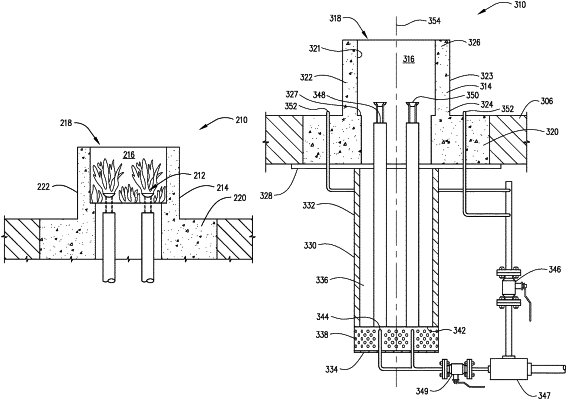| CPC F23D 14/02 (2013.01) [F23D 14/64 (2013.01); F23C 6/047 (2013.01); F23C 9/00 (2013.01); F23C 2900/06041 (2013.01); F23D 14/70 (2013.01); F23D 17/002 (2013.01); F23D 2207/00 (2013.01); F23D 2900/14021 (2013.01); F23N 2900/05003 (2013.01)] | 16 Claims |

|
1. A fuel gas burner apparatus comprising:
a burner tile including:
a base;
a discharge end opposing the base, the discharge end defining a discharge outlet; and
a wall connecting the base to the discharge end and surrounding the discharge outlet, the wall extending into a furnace, and having an interior surface defining a primary combustion chamber and an exterior surface, wherein the discharge outlet allows flow from the primary combustion chamber to the furnace;
a plurality of flame holders located within the combustion chamber; and
a plurality of primary tubes, each primary tube having an outlet end, and wherein each primary tube is configured to introduce a fuel-air mixture into the primary combustion chamber, and the outlet end is located relative to the flame holders such that fuel-air mixture introduced into the primary combustion chamber through the outlet end encounters the flame holder so as to anchor flame resulting from the combustion of the fuel-air mixture within the primary combustion chamber.
|